VW Passat B6 05-09 Tuning
"Putting more pazzaz in your Passat"
A more enjoyable drive and a more well-equipped vehicle than the previous Passat the B5, and the following B7 and the B8 shows clear advances, whilst evolutionary rather than revolutionary.
It is both comfortable and capacious, and VW includes a high-performance all-wheel-drive saloon in the R36 model line, as well as estate and coupe-like body types to cater to the broadest possible range of drivers.
It has a big trunk, greater than an A4 in my view, but still offers plenty of internal space, making it the ideal vehicle if practicality is a need.
The R36 is the performance variety that stands out here, but all of the diesel engines are lively and reliable, and all are capable of being tweaked and adjusted to provide much more power.

We would go for the 1.8TFsi 2.0Tfsi the engines and the 1.9 TDi 130 and 2.0 TDi (avoid the 1.4 and 1.6 versions unless you are desperate for economy they feel quite underpowered.
Anything less than 130bhp would seem sluggish on such a substantial platform; the later TFSi engines are good alternatives, and the 170TDi is a true performance jewel; nevertheless, it may be difficult to live with if you only travel short distances.
Let's have a look at the modification possibilities available to you for your Passat tuning endeavor.
The Passat is a logical option for families while yet providing an enjoyable drive.
Typically, handling adjustments are your first port of call when it comes to the Passat. Drop the vehicle up to 35mm and install stronger dampers; larger drops would often need further modifications.
Our objective in Passat engine tuning should be to boost top-end power and torque.
We have guides for other Passat Models in addition to this one.
Please watch our video introduction to VW Tuning.
VW Passat Tuning modifications.
First let's give ourselves an overview of the engines and specs that you get in the B6 platform. Then we can talk about the mods and upgrades for this.
| 1.4 TSI | CAXA | 2007-2015 | 122 PS (90 kW; 120 hp) @ 5000 | 200Nm (148lbft) @ 1500-4000 |
| 1.6 | BSE / BSF / CCSA | 2005-2010 | 102 PS (75 kW; 101hp @ 5600 | 148Nm (109lbft) @ 3800 |
| 1.6 FSI | BLF / BLP | 2005–2008 | 115 PS (85 kW; 113hp @ 6000 | 155Nm (114lbft) @ 4000 |
| 1.8 TSI | BZB | 2007-2010 | 160 PS (118 kW; 158hp @ 5000 | 250Nm (184lbft) @ 1500-4200 |
| CDAA | 2008-2010 | 160 PS (118 kW; 158hp @ 4500-6200 | 250Nm (184lbft) @ 1500-4500 | |
| 2.0 FSI | BLR / BVX / BVY | 2005–2010 | 150 PS (110 kW; 148hp @ 6000 | 200Nm (148lbft) @ 3500 |
| 2.0 Turbo FSI | AXX / BWA / BPY | 2005-2008 | 200 PS (147 kW; 197hp @ 5100-6000 | 280Nm (207lbft) @ 1700-5000 |
| 2.0 TSI | CAWB | 2008-2010 | 200 PS (147 kW; 197hp @ 5100-6000 | 280Nm (207lbft) @ 1700-5000 |
| CCTA / CBFA | 2008-2013 | 200 PS (147 kW; 197hp @ 5100-6000 | 280Nm (207lbft) @ 1800-5000 | |
| 3.2 V6 FSI | AXZ | 2005-2010 | 250 PS (184 kW; 247hp @ 6250 | 330Nm (243lbft) @ 2750-3750 |
| 3.6 V6 FSI | BLV | 2005-2010 | 280 PS (206 kW; 276hp @ 6200 | 360Nm (266lbft) @ 2750 |
| R36 | BWS | 2008-2010 | 300 PS (220 kW; 300hp @ 6600 | 360Nm (266lbft) @ 2400-5300 |
Most VW group engines will fit, and we've covered most engines now in great detail, so if you want to learn more about the best engine mods we suggest you check out the guides below, this page will focus on tuning the B6 as a whole and we'll discuss engine, handling and braking mods in detail.
- 1.4 1.5 TFSi tuning
- 1.4 TSi/TFSi/Twincharge tuning
- 1.8T engine Tuning
- 1.8 & 2.0 TFSi (mk1) Tuning
- 1.8 2.0 TFSi (ea888) Tuning
- 2.0 TFSi carbon issue & care guide
- 2.5tfsi tuning
- 3.0 V6 24v TFSI Tuning
- 2.8 V6 30 valve, 24 valve 3.0 V6 30v and 3.2 VR6 Tuning
- 3.6 VR6 Tuning
- 1.6 TDi tuning
- 1.9 TDi tuning
- 2.0 TDI 140-170 tuning
- 2.0 TDI tuning (EA188)
- 2.5 TDI tuning
- 2.7 & 3.0 TDI tuning
- 2.5 Tdi R5
- 3.0 Tdi EA897
Getting the right modified parts for your planned usage of the car is a time and money saver. Stage 3 motor sport parts just don't work well on the road making the car difficult to drive.
Please watch our video which covers the 5 principles of tuning your car.
Please view our video on VW Passat Mods & Tuning. Be sure to subscribe and support our new channe.
Best Engine Mods and tuning upgrades for your Passat B6
- Suspension modifications - coilovers and bushing replacement. Coilovers, bushing replacement, and attention to the suspension mounts with a strut brace all contribute to the handling improvement of your Passat.
- Upgrade your brakes - Don't only concentrate on speed; you also need to be able to stop it.
- Remapping (especially on the turbos) will give a massive power gain
- Turbo upgrades engine tuning/remapping is the most cost-effective solution.
- Turbocharger and supercharger upgrades - forced induction is the most effective method of increasing air supply, enabling you to burn more fuel and produce more power. It is one of the most expensive enhancements, but it yields the most benefits.
- Lighter flywheel - you'll like the quicker rev speed changes on the majority of models. However, diesel engines should continue to use the DMF.
Passat B6 Tuning Stages
Typical stage 1 mods often include: Suspension upgrade (drop 21mm - 39 mm.), Panel air filter, Alloy wheels, Sports exhaust, Engine Tunes/Remapping, Lighter flywheel.
Typical stage 2 mods often include: Power/Sport clutch, Ported and polished head, Fast road cam, high flow fuel injector, fuel pump upgrades.
Typical stage 3 mods often include: Sports gearbox, Internal engine upgrades (pistons/head/valves), Adding or upgrading forced induction (turbo/supercharger), Engine balancing, Competition cam.
While peak power is desirable, a daily driver's Passat requires a broad power band and maybe an extended rpm range so there is a little top end.
Let's take a closer look at them in further depth; in the meanwhile, please watch our video on the finest automobile tweaks to optimize your tuning investment.
Passat B6 Suspension Mods.
On the track, rapid cornering is critical, and suspension plays a role. Because the track is forgiving, you may employ severe suspension and lower the vehicle to improve aerodynamics and centre of gravity.
As the rubber suspension bushings on the Passat deteriorate, you may notice squeaks, rattles, and bumps, and the suspension may not be as rigid as it might be.
Therefore, your first step should be to improve the core setup, and replacing to polyurethane bushings is an excellent suggestion.
Therefore, what variables and elements must you consider while setting up and selecting the suspension for your everyday driver?
When engineers build a vehicle's suspension, they must take into account speed bumps, uneven terrain, passenger comfort, and road noise.
The majority of factory-built autos include soft suspensions that degrade handling and driving enjoyment. Because track vehicles are configured for driver preference and style, the best configuration is not only subjective, but also dependent on the circuit's attributes.
A good suspension system maintains the tyres' proper angle on the road for maximum contact area. Body roll must be kept at a minimum, and the centre of gravity of the vehicle must be kept low. Torquecars recommends a 30mm drop for hot hatches with enhanced suspension.
Common Suspension Mistakes & Urban Myths.
Purchasing a non-adjustable suspension kit that lowers the automobile 30mm with the expectation that it would be ideal.
The majority of kits are fairly generic, and vendors often imply that they may be used on any or a variety of vehicle types.
It is patently untrue to assert that one suspension suits all engine, wheel, and Passat weight combinations (the diesel engines are pretty heavy).
An incorrect angle between the final drive and the wheel hub may cause damage to the drive shaft and gearbox.
Additionally, adjusting the ride height has an effect on how the suspension travels under load, resulting in scouring and early tyre wear!
Additionally, purchasing decreased springs and using normal dampers, or upgrading dampers and using standard springs, is a terrible choice. The suspension system should be analysed holistically.
Having an Impact on Ride Height Cars that are slammed low look fantastic. However, the downsides are that your ground clearance also decreases, your tires grind against the wheel arches, and speed bumps become insurmountable obstacles.
Remember that speed bumps will strike the sump and take off the bottom of the engine and most of the front skirt of a lowered car. Lower does not always mean better.
TorqueCars advises a 35mm drop for the majority of street vehicles and a 30mm drop for Passats equipped with improved suspension (sporty versions which already have lower suspension).
These tolerances may be far lower with standard suspension and 17" rims, however lowering the vehicle may create a whole slew of complications.
The objective should always be to enhance handling, and lowering the vehicle minimizes airflow underneath it, which aids in stability.
Bear in mind that the lower springs and shocks must be matched. Cutting the springs is a bad idea, since it requires the spring which was manufactured to function within a tolerance to try to do so with less bound and rebound, resulting in stress fractures.
Spring cuts can shatter or break unexpectedly - NEVER CUT YOUR SPRINGS!
Ideally, you should get a suspension kit that is easily adjustable to your driving style.
A solid pair of coilovers will aid in this process by letting you to tailor them to your driving style. KW, Koni, Bilstein Eibach, and Bilstein
Passat Brake upgrade mods
Don't forget about the brake pads, which are more crucial than the discs, and might have a negative impact on your Passat's performance.
Brakes are essential since travelling rapidly implies being able to come to a complete halt! This is how a brake works: A friction pad is pressed against the disc, which turns kinetic energy into heat.
This heat dissipates, slowing down the car's forward speed. There is a lot of heat buildup in the brakes when you do a lot of braking. This can be seen in nighttime motorsports, where the brakes glow with heat after a lot of use.
When you press the brake pedal, the force is sent to a magic box called a servo, which uses the power from the engine to make your foot pressure even more powerful. This gives you a nice, gradual feeling.
The extra pressure comes from a tube filled with braking fluid that goes to the friction pads and puts more pressure on them (liquids do not compress like air).
The braking fluid itself can get very hot near the end of the hot brake pad. This puts more strain on the brake fluid.
Brake fluids are hygroscopic (they attract water particles) and can boil at high temperatures. Air bubbles in the brake fluid can make the brake feel spongy at best and completely stop the brake from working at worst, which is why you need to change the fluid every few months.
See the article on Brake Fade for more information about this.
Choosing a performance brake pad for your Passat.
The pad spreads the heat from the brakes over the discs, so the cooler the disc, the better.
Having a vent in the middle of a disc makes it easier and faster for the disc to cool down.
Help keep your pads "clean and sharp" by increasing the air ratio and keeping gas from building up between the pad and the disc. Drilled discs also make it easier to clean the pads. The bigger the discs, the better the cooling, but they may require a different alloy wheel.
Pads and other things for them. It doesn't matter if the high friction brake pads make noise and dust.
A high friction compound is used to make racing pads, and it works best when the temperature is high.
It's not good to use race-grade brake pads on the road when braking is done on cold pads or in short bursts. They only work when they're very hot.
This is what we at TorqueCars think about brake pads from Pagid and Black Diamond "they're a good balance between stopping power and wear and two brands I would happily fit to my car".
A lot of high-performance brake pads don't make a lot of brake dust and last longer than normal brake pads, even though how you drive will affect the pads and discs. When the ABS senses that the wheel is stuck, it lets go of the brake until the wheel moves again.
As your grip level changes, this makes the braking force less powerful. Steering makes it less efficient to brake because it changes the weight distribution, which makes it easier for the wheels to lock up with larger wheels you have a wider margin for error to work in.
You should leave the brake work to the experts rather than take risks.
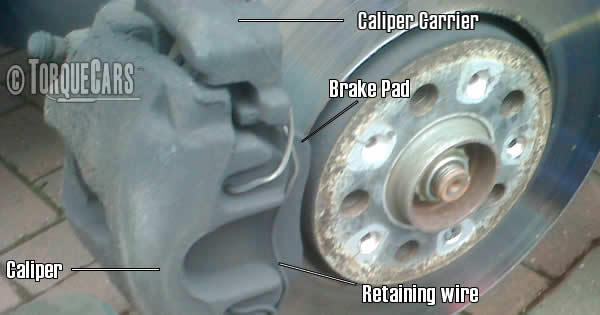
Improve your brakes on the Passat B6.
A car's stopping power can be made better. Normally, you'd buy new discs and pads. A bigger disc will have a grater friction surface and spread out more heat, so you will start to benefit right away.
With a big brake disc conversion kit, you will be able to feel the brakes better and be able to tell when the car starts to lock up more quickly.
As long as your car is a basic one, you can easily and cheaply buy the parts you need from a more powerful model in the same family of cars.
A small family car usually comes with performance brakes, if they fit into the alloy wheels or you need to get wider rims for them to work with.
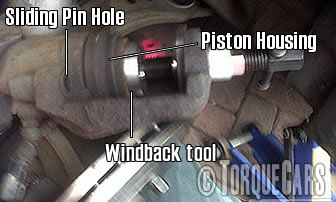
Trying to figure out what parts small cars have in common with bigger cars can help you figure out what to do. There are a lot of hubs that can be used on cars from different manufacturers, so the brakes from different cars can be used together.
The more pistons you have, the more clamping force you have, which means you can use bigger pads. When upgrading your brakes think also about the servo and brake fluid.
It must be the same amount of brake fluid as the master cylinder in the donor car. The pedal stroke and how it feels will be different, and the pedal will likely move closer to the floor before the brakes work if this is not adjusted.
In order to match the volume of the donor car's master cylinder, the factory master cylinder may need to be enlarged.
To get the most out of upgrading the discs, you should add better quality pads, calipers, and pistons.
Remapping the Passat B6.
Manufacturers make timing maps that have a lot of room for temperature changes, small problems, and bad weather. Some countries have different goals for CO2, HC, and NOx emissions, so they have to use a "fudged" method.
There is a lot of room for things to go wrong with cars, so manufacturers make sure there is a lot of room for things to go wrong with them.
The fact that different countries use different types of gasoline and have different types of bad weather adds to the fudge that has to be made to keep all cars working well around the world.
The output of each car can vary by 20bhp depending on how well the parts are machined and put together. Instead of looking at each car and making a unique timing map, they use a one-size-fits-all approach.
Manufacturers use tunes or remaps to make different power versions of the same engine, which lowers insurance rates and improves fuel economy.
Add to that the fact that most people who read TorqueCars will be upgrading parts, and you have a strong case for a remap.
The manufacturer also takes into account things like not having the car serviced often, dirty plugs, bad leads, clogged air filters, partially blocked injectors, and more. So they are very conservative and cautious in the way they set up the ECU. This leaves a big margin for improvement.
Who needs to think about installing a tune/remap tune? Anyone who has made changes to their engine should think about remapping.
Remaps are also recommended for all modern turbocharged engines, which can add 20-30% more power. It is very important for turbocharged cars with electronically controlled fuel injection to get a new map.
Remapping Issues and Drawbacks What are the hidden costs?
When you buy a car, you'll have to service it more often, sometimes cutting the service interval in half. In this case, you must be ready to replace parts that break because of the extra work they are doing because of the map's setting. When an engine is tuned to make more power, it puts more stress on parts like air flow sensors.
Most of the time, it takes a while for the weak points in an engine to show up after a map. You can look at our remap troubleshooting guide for help.
Most of the time, problems with the turbocharger and the clutch will show up after the car has been remapped.
Also, turbos can break down, important parts like pistons and bearings need to be looked after, and the clutch isn't as strong as it used to be. What about NASP changes? If you don't have a turbo, a tune/remap will only help you get a few more BHP (10 percent is typical).
TorqueCars says that cars that don't have turbo engines should first change everything else (cams, pistons, increase compression, engine balance, air intake, exhaust, head work, bigger valves etc...)
A tune/remap could help you get the most out of these things after this.
Turbocharged engine care
Also, a tune/remap often adds more boost to the engine at lower rpms, which makes the turbo run faster and much hotter.
In this case, you need to let the turbo cool down before you turn off the motor, or the oil could degrade significantly and need to be changed, which could cost a lot of money in repairs if ignored. Turbo timers also help keep the engine running until it cools down.
Be very wary of peak power claims. Please don't compare maps based on peak power because some tuners have been known to make a power blip or spike to get attention and get the headline power figures.
Here's a graph that shows what we mean.
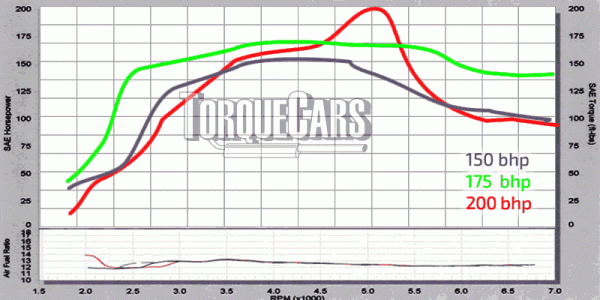
Instead, pay attention to the total torque curve. Having more power at the bottom of the rpm range is preferable to a power spike.
The red line shows that there is more PEAK power, but there is less power everywhere else. The green line shows that there is more power all the way through the RPM range.
It also shows peak power at 4000rpm, which is great for an engine that reaches 7000rpm. This gives you a good spread of extra power where you need it the most.
It should be easy to see the quality of a map by looking at the dyno printout. We want to see a smooth rise in torque all the way through the rpm range, with no dips or troughs.
Often, you'll see someone with a laptop in the company's hidden office. They'll play around with the fuel and spark advance tables and hope for the best, but they won't actually see the cars they're working on.
Turbo modifications and upgrades for your Passat
Big turbos make more power, but they also wear out the engine and make the car hot. An engine with a turbocharger may run at 1100°C and 100,000-150,000rpm when it is running.
Some turbo configurations and new cars can go twice as fast as these. They will need lubrication, cooling, and balance at these high speeds. Its most common problems are oil seal failure, oil clogging, and worn out parts when not allowed to cool down after a spirited drive.
Installing a bigger turbo, will require more pipes and work to do than a straight swap. The straight swap or hybrid literally just replaces the old one. To get the most out of it, you'll need to tune/remap your car. Most hybrid turbos will work fine on regular maps just running at lower boost settings than they would provide.
The shape of the air intake, the compressor wheel, and the shape of the turbine are optimized for boost at high or low RPMs based on your needs.
When you drive a car on the road, you need a lot of low-down power. A smaller turbo gives you a more even torque curve with less lag.
A hybrid turbo will also have better bearings, better balancing, and better seals, so it will be even more powerful. Dependability and boost can be increased by lowering RPM.
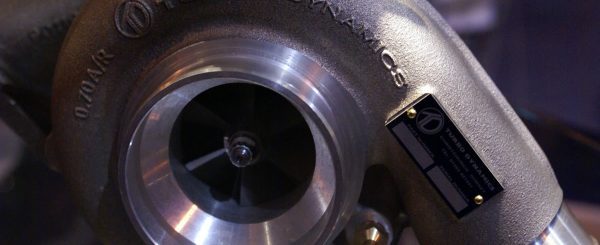
A Guide to Volkswagen and Audi Group Turbochargers
Many different turbocharged Passat and VAG group engines are out there now. We'll look at some of the most popular turbos from the VAG group, as well as what makes them different and which are the best ways to improve them.
Even though the turbo's power limits can be exceeded, the turbo's life will be cut short.
Before the turbo finally breaks, you will usually hear a whining or siren sound and then see smoke coming out of the engine!
It's time to look for something else. An engine that has a bad turbo could do a lot of damage when the compressor doesn't work and it ends up in the engine.
Differences between K03, K03s, and K04:
A comparison The K03 turbo was available from 1996 to 2000, after which the K03 turbo was replaced by the K03 turbo.
Types of Powerplants With the 1.8T AGU engines, the K03 turbos are employed. These engines are equipped with a MAF sensor and a cable-operated throttle, as well as smaller injectors than usual.
For the AUM and similar engines with MAF and MAP sensors, K03s turbos are utilized. Fuel efficiency and performance are both increased thanks to the better drive-by-wire throttle on these engines. Stigan and BorgWarner are two of the most prominent producers of K03, K03s, and K04 turbos.
Turbo limits - safe should retain factory reliability and longevity, the Max however is pushing to the limits and will certainly shorten the turbos lifespan.
| Turbo | Safe Max | Maximum |
| K03 | 190hp | 220hp |
| K03s | 215hp | 250hp |
| K04 | 220hp | 350hp |
KO3 and the KO3s Differences
The number of blades is the most important difference between the different turbos. The K03 has 11 blades, but the K03s has only 8 blades.
The actuator that opens the turbine bypass valve is different for each turbo. It can range from 65N to 85N, but some variants had a two-port actuator.
Because 180-horsepower engines have more boost pressure, they often use actuators that are better made and have more force when they open.
Increasing the compressor on the side that takes in air from a hybrid turbo usually increases power. This is a common method used by many manufacturers.
As long as you do everything right, your K03 can get up to 190 horsepower with the right mods and upgrades.
However, the turbo's life will be cut short the closer you get to the safe limits and the more you push it hard.
The K03s are more powerful than its brother, the K03. The safest amount of power with K03s is around 215 bhp; any more, and turbo life is at risk.
You can get up to 250 horsepower from this turbo, but expect it to last a lot shorter than it would if you used a different turbo.
K03s have more power than K03s by at least 25 bhp. If you're willing to compromise turbo life or do more maintenance, you can get even more.
K04 has a big advantage over K03. The K04, compared to the K03 and K03s, is a lot bigger and does a lot better work.
In order to boost the K04's performance, you need the right hardware. The safe maximum for the KO4 is 220 horsepower.
There were two types of turbo: the K03 and the K03s, which were smaller than the K04, but the K04 was bigger than the K03. While the K04's power output was a little less than the K04's, the amount of space needed for its installation was a lot less than that of the K04.
What's the Deal with Hybrid Turbo Chargers? Why Do People Use Them?
There are a number of turbo manufacturers, including Stigan, IHI, and Borgwarner that make drop in replacments that meet or exceed the OEM specs, however many individuals insist that hybrid turbochargers are needed for maximum power gains.
So what is a hybrid turbo? High-performance components from many manufacturers come together to create hybrid turbochargers, which are an upgraded version of the original. These hybrid turbochargers exist only to outperform the stock turbochargers in terms of output.
What Are The Differences Between An OEM Turbo And A Hybrid Turbo?
A hybrid turbo may have a single part changed or, in certain situations, all of the OEM turbo's components replaced to obtain extraordinarily high performance.
Even though they seem like stock, these turbochargers have been tweaked on the inside, resulting in much better performance.
The Advantages of Hybrid Turbos Hybrid turbos are superior than standard turbos in terms of reaction and performance since they are made by integrating the finest components in the industry.
While running at a safe speed, a correctly built hybrid turbo guarantees that additional pressure and flow are obtained.
This ensures that the components will last for a long time.
Re-mapping of the K04
Stage 1 changes to the K04 turbo increase its maximum power by around 25 to 30 horsepower, however, we've seen several projects far exceed this.
Remaps of the newer IHI IS38
Exhaust System Audi, Seat, Skoda and VW enthusiasts will love this turbo since it's capable of producing up to 370 horsepower with the proper tuning mods!
An Audi and Volkswagen turbocharger, the IS38, is highly acclaimed, and with remapping, it performs at the top of its game. Discuss turbo improvements with us in our forum, or use the comments section to share your knowledge with the rest of our audience.
It is really appreciated by us and enables me to develop these posts and ensure that we are providing the most up-to-date and accurate information possible.
A lighter flywheel
The flywheel stores the rotational energy in your engines output. This helps the car withstand speed fluctuations and vibrations, which is good for cruising but bad when you need a rapid engine response.
With a lighter wheel, the engine has less strain and can rev freely, producing greater power. Stock engines rev substantially slower than race-tuned engines with light flywheels.
TorqueCars warns against making your own light flywheel by drilling holes in it!! (You might laugh but I've seen it done!) Flywheels in cars are carefully balanced. A wobble in the flywheel might harm the engine and reduce the red line and will certainly stress your drivetrain.
If you're changing a clutch, replace the flywheel also but these are not suitable for all Passat B6 engines. Especially diesels, the dual mass flywheels are installed for a reason.
What is a DMF?
A spring connects two separate surfaces effectively joining two flywheels together. The spring slows rotating speed when there are blips and will really smooth things out.
They smooth out 4 cylinder engines and decrease the potential for reversion. Some of our members are using solid flywheels to replace DMFs but please read our guide on DMF to SMF conversions first.
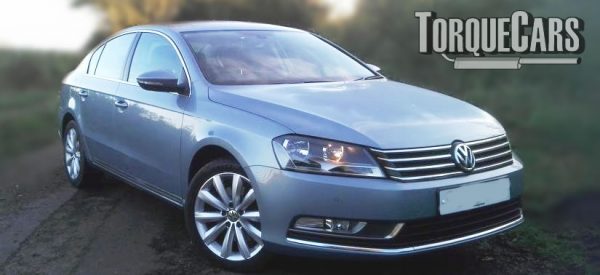
VW Passat Intake and Exhaust.
Next, we'll check the intake and exhaust to verify adequate engine flow. A comprehensive induction setup maximizes power improvements. Small engines will lose power, therefore use a panel air filter instead.
Increasing the valve size, porting and head flowing on the Passat engine will boost torque and allow you to increase torque on other tuning items. The newere engines are generally much better designed than older ones and there are fewer benefits to porting unless you are running massive power gains.
Opening the air intake port to match the intake manifold would not help much unless a step obstructs airflow into the engine. So the areas most likely to benefit from port matching are exhaust ports.
Extending the port size is only necessary in highly tuned engines when the port size has become a bottleneck.
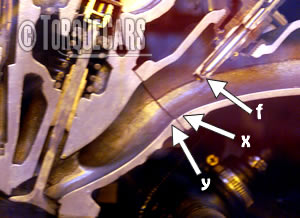
Using smaller channels with fewer bends or angles improves flow rates.
This reduces power; the objective should be to have both port apertures about the same size to prevent turbulence on the downflow side.
In this figure, a seamless connection between the intake manifold (x) and the engine port (y) is illustrated.
The fuel injector (f) sprays fuel into the intake manifold, directly to the valves (unless in a direct injection engines).
The intake angle has been reduced to reduce bends in the air flow into the engine. This is not always practicable on all engines, but the goal is to smooth the air flow and reduce bends.
The greatest power improvements are generally between 1.5 and 2.5 inches.
A solid fast road power clutch keeps that power where it belongs. Never scrimp or use a normal clutch. All turbocharged autos benefit from remaps. Although unlikely on NA (naturally aspirated) engines, it may help unlock potential if you've done a lot of changes.
VW Passat Wheel modifications.
Alloy wheels are better for the brakes and lighter than steel wheels. Although they may look good on the Passat, big alloy wheels will actually reduce performance.
Due to the difference in effective final drive ratio, the bigger you go the slower you move. Aim to maintain the wheel's total rolling diameter the same as factory supplied.
We never advocate going beyond 18 inches. However, the bigger rim size caused tram lining and other troubles for several of our members.
VW Passat Common Problems
There are a few problems and issues to look out for on popular vag group engines, but I've split these off into other articles.
- 2.0 TFSi carbon buildup issues - direct injection engines require an intake clean.
- 2.0 TFSi problems - N75 and N249, high oil consumption, Cam Follower wear, Water Pump failure, and Turbo issues
- 2.0 TDi problems - Flywheel, Oil pump, Lumpy Idling
- 1.8T Problems - Diagnosing the common faults and issues
Please join us in our forum to discuss the Passat options in more detail with our Passat owners. It would also be worth reading our Passat tuning articles to get a full grasp of the pros and cons of each type of modification.
Please Check out my YouTube channel, we're regularly adding new content...
PLEASE HELP: I NEED YOUR DONATIONS TO COVER THE COSTS OF RUNNING THIS SITE AND KEEP IT RUNNING. I do not charge you to access this website and it saves most TorqueCars readers $100's each year - but we are NON PROFIT and not even covering our costs. To keep us running PLEASE Donate here
If you liked this page please share it with your friends, drop a link to it in your favourite forum or use the bookmarking options to save it to your social media profile.
Feedback - What do You Think?
Please use our forums if you wish to ask a tuning question, and please note we do not sell parts or services, we are just an online magazine.
Help us improve, leave a suggestion or tip
Please watch this video and subscribe to my YouTube channel.

 Click to accept YouTube Cookies & Play.
Click to accept YouTube Cookies & Play.